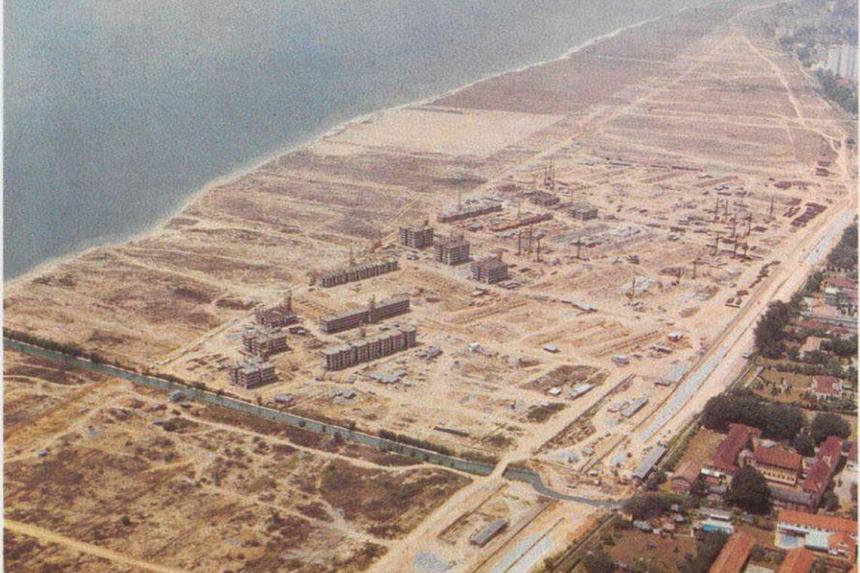SINGAPORE – Marine Parade and the East Coast area sprang up from the sea as a result of a major land reclamation project between the 1960s and 1980s.
Marine Parade was the first housing estate to be built entirely on reclaimed land, and 2024 marks the 50th anniversary of the first residents moving into the estate.
In the coming decades, another reclamation project – Long Island – is planned for the south-eastern coast. When completed, the stretch of reclaimed land will protect Singapore against rising sea levels. It will have a reservoir to serve the country’s rising water demands, and space for new homes and amenities to address land needs.
The Straits Times looks back at the 20-year East Coast Reclamation Scheme, which was completed in 1985 and added 1,525ha of land and 18km of new coastline.
1963: Testing the waters
About 19ha of land – the size of about 25 football fields – is reclaimed along the Bedok coast in a pilot project.

1966 to 1971: Work begins
In Phase 1, 405ha of land stretching from Bedok to the Singapore Swimming Club in Tanjong Rhu is reclaimed.

Excavating local soil
Hills in places, including Bedok and Siglap, are cut and levelled, and the earth used for the project. About 20,000 cubic m of earth is transferred each day to the sea via a conveyor belt. Sand is also sourced from abroad.



1970 and 1971: Extending the reclaimed stretch
In Phase 2, reclamation is extended to the tip of Tanjong Rhu.

1972: First phase of East Coast Park development
The arid reclaimed shoreline slowly comes to life with plants and trees.

1972 to 1976: First HDB flats in Marine Parade
The first blocks of flats are built in Marine Parade in 1972 on land reclaimed in Phases 1 and 2. Phases 3 to 7 are carried out between 1971 and 1985. The 20-year reclamation project costs around $613 million.

The first public housing precinct comprising Blocks 1 to 8 in Marine Terrace is completed in 1974.
By 1976, Marine Parade estate, comprising 7,800 public housing units, has been built.

1981: Completion of East Coast Parkway

The last section of East Coast Parkway between Marina Centre in Tanjong Rhu and Shenton Way opens to traffic in September 1981.

1991: Long Island first mooted
Long Island is first envisioned as a reclaimed island for beachfront housing and leisure in the Urban Redevelopment Authority’s (URA’s) 1991 Concept Plan.
At the 2019 National Day Rally, Prime Minister Lee Hsien Loong shares the idea of creating a Long Island that integrates coastal protection with land reclamation.
In 2021, the authorities start coastal protection studies on the City-East Coast area. In 2022, the URA studies the Long Island concept as part of the Long-Term Plan Review, and public feedback is sought.

From early 2024, the authorities and agencies will embark on extensive environmental and engineering studies to eventually guide Long Island’s development.


